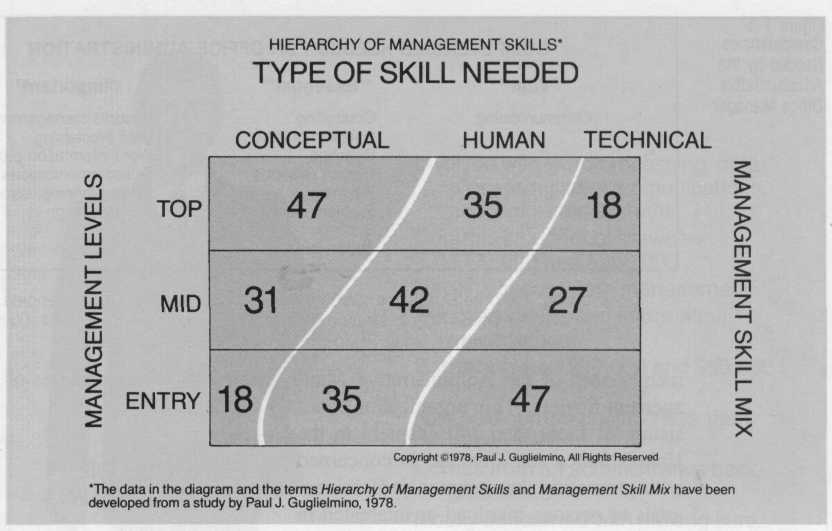
- •Class 1 Administrative Office Management in general
- •The functions of management
- •The administrative office manager
- •Manager, Administrative Services
- •Skills of the aom
- •Competencies Needed by the aom
- •Questions for review
- •Questions for discussion
- •Case 1-1 Developing a Problem-Solving Attitude—a
- •Case 1-2 Developing a Problem-Solving Attitude—в
Manager, Administrative Services
Supervises administrative services, including typing, stenography, reception, printing and/or duplicating, filing, mailing, messenger, distribution of office supplies and similar services.
Negotiates the purchase of office supplies and equipment and contracts for service of office equipment.
Supervises receiving and shipping functions for administrative departments.
Controls interoffice messenger and communications units, maintaining directories and telephone systems.
Conducts special studies to determine equipment performance and costs, and reviews new equipment with sales representatives.
Coordinates with operating departments to establish new and modified existing systems for administrative services.
Trains personnel to perform tasks and indoctrinates them on company policies and procedures.
In small organizations, factory workers may be the primary source of business activity. Hence, the office force is not so great in number. In such firms, the office service activities may be supervised directly by an accountant, the controller, the treasurer, the credit manager, or the human resources manager.
AOMs have a company-wide responsibility for managing the information cycle — the collecting, processing, storing, retrieving, and distributing of information. In fact, administrative office management is looked upon as a process of converting information into action. Information is viewed by organizations as a critical asset that is every bit as valuable as any physical asset, such as a building or machines and equipment. AOMs are aware that the competitive positions of their companies depend on their abilities to produce timely and reliable information and to use that information productively. Like all other resources, information must be managed.
Skills of the aom
The AOM must be a skillful innovator — a creative manager—to administer the changes occurring in the organization's information-handling activities. The types of skills needed by creative managers have been identified as:
Conceptual skill — he ability to view an entity, such as the organization, as a whole and to see how a change in one part or function of the entity affects all other parts or functions.
Human skill — the ability to lead a team, to work effectively as a member of the team, and to obtain cooperation from all team members.
Technical skill — the ability to understand a specific function or activity, with its specialized knowledges, and to use efficiently the tools and techniques related to that function or activity.'
The hierarchy of management skills shown in Figure 1-4 indicates the various mixes of these three skills that are needed at different levels of management. Although the percentage of human skill needed is about the same at each level of management, there are significant differences in the relative proportion of conceptual and technical skills required at different levels.

Figure 1-4 A Hierarchy of Management Skills
As pointed out earlier, in many organizations the AOM is found at the middle management level. In Figure 1-4, we see that conceptual skills account for about one-third (31 percent) of the management skill mix at this level. With conceptual skills the AOM is able to view the information management system as a whole and to see how a change in one information-handling activity has its effects upon other activities. For example, in making a decision to install an automated system for retrieving company records, the AOM visualizes how such a change will affect all other phases of the information cycle, especially the processing and storing of records and forms. (Note, in contrast, the amount of conceptual skill needed at the top- and the entry-management levels.)
The largest proportion of the skill mix for the AOM — 42 percent—consists of human skills, which mainly concern working with people. Human skills are exhibited daily by AOMs in leading and directing subordinates and in their interrelationships with peers and superiors. A little over one-fourth (27 percent) of the AOM's skill mix consists of technical skill. Technical skill is the most tangible of the three skills and is required of the greatest number of office workers. As an example of the use of technical skill, consider the AOM who is updating the salary compensation plan for office personnel. To develop a fair compensation plan, the AOM must know how to undertake a salary survey and be currently informed of government regulations that affect the payment of wages and salaries.
